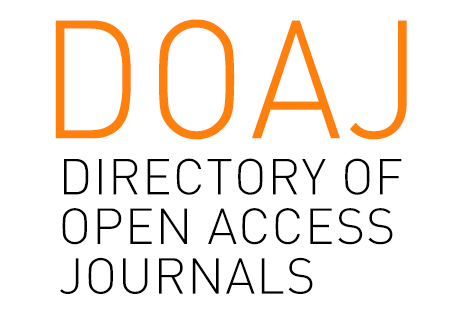Instrument for assessing risk of suicidal behavior in primary care: scoping review
Instrumentos para avaliação de risco de comportamento suicida na atenção básica: uma revisão de escopo
DOI:
https://doi.org/10.17765/2176-9206.2024v17n4.e12784Keywords:
Suicidal behavior, Primary health care, Risk assessment, Instruments, Psychometric scalesAbstract
Carry out a scoping review in order to identify and analyze risk assessment instruments for suicidal behavior in primary care, adopting the guidelines of Arksey and O'Malley and the PRISMA-ScR checklist. The search took place in the PUBMED, Scielo, MEDLINE and Web of Science databases, with inclusion criteria in the last five years. 3,339 articles were selected in the main search and were refined into 10 final studies. Tools such as ASQ, C-SSRS and CASSY were identified, but critical analysis revealed divergences in their effectiveness, highlighting limitations and strengths. The results provide a comprehensive overview of the effectiveness and limitations of suicide risk screening tools in primary care, highlighting the need for judicious choice and adaptation of tools to ensure effective screening. The heterogeneity of results highlights critical areas for future research and continued improvement of clinical practices.Downloads
References
Serrano CC, Dolci GF. Suicide prevention and suicidal behavior. Gac Med Mex. 2021;157(5):547-552. https://doi.org/10.24875/GMM.M2100061.
American Association of Suicidology (AAS). About Suicide. 2023. Disponível em: Available from: https://suicidology.org/about-suicide/.
World Health Organization (WHO). LIVE LIFE: An Implementation Guide for Suicide Prevention in Countries. 2021. Disponível em: Available from: https://apps.who.int/iris/bitstream/handle/10665/341726/9789240026629-eng.pdf.
Verrocchio MC, Castelli P, Fulcheri M. Mental pain and suicide: A systematic review of the literature. Front Psychiatry. 2016;7:108. https://doi.org/10.3389/fpsyt.2016.00108.
Landa-Blanco M, Moncada-Jiménez J, Durán-Martínez M, Aguilar-Morales G. Factores psicológicos asociados al riesgo suicida en estudiantes universitarios de Honduras. Avances en Psicología Latinoamericana. 2022;40(1):1-17. https://doi.org/10.12804/revistas.urosario.edu.co/apl/a.8537.
. O'Connor DB, Ferguson E, Green JA, et al. Cortisol awakening response and suicidal behavior: A systematic review of prospective studies. Psychoneuroendocrinology. 2020;116:104672. https://doi.org/10.1016/j.psyneuen.2020.104672.
.Giner L, Blasco-Fontecilla H, Pérez-Rodríguez MM, et al. Modulation of interleukin-1β in plasma by the serotonin transporter genotype in patients with a history of suicide attempts. J Psychiatr Res. 2019;111:61-67. https://doi.org/10.7202/1074710ar
Gianvecchio VAP, Jorge MHP. O suicídio no estado de São Paulo, Brasil: comparando dados da Segurança Pública e da Saúde. Cien Saude Colet. 2022;27(6):2427-2436. https://doi.org/10.1590/1413-81232022276.16112021
de Sousa CA, Fajardo AP, Mello TM. Evaluation of suicide risk in primary care: a systematic review. J Psychol Res. 2019;14(2):123-130. https://doi.org/10.1016/j.jpsychores.2019.04.007.
Ornelas Silva RA, Santos RM, Fajardo AP. Mental health and primary care: an integrative approach. Prim Health Care Res Dev. 2020;21(e16):1-7. https://doi.org/10.1017/S1463423620000137.
Richardson LP, McCauley E, Grossman DC, et al. Evaluation of the Patient Health Questionnaire-9 Item for detecting major depression among adolescents. Pediatrics. 2010;126(6):1117-1123. https://doi.org/10.1542/peds.2010-0852.
Turecki G, Brent DA. Suicide and suicidal behaviour. Lancet. 2016 Mar 19;387(10024):1227-39. https://doi.org/10.1016/S0140-6736(15)00234-2
Patel V, et al. Effectiveness of an intervention led by lay health counselors for depressive and anxiety disorders in primary care in Goa, India (MANAS): a cluster randomised controlled trial. Lancet. 2018;376(9758):2086-2095. https://doi.org/10.1016/S0140-6736(10)61508-5
Weare K, Nind M. Mental health promotion and problem prevention in schools: what does the evidence say? Health Promot Int. 2011;26(S1). https://doi.org/10.1093/heapro/dar075.
Silva DA, Santos DF, Maciel GJ, Manfroi GR, Prado J. Primary health care professionals' perceptions on suicide prevention. J Public Health. 2020;28(3):291-298. https://doi.org/10.1007/s10389-019-01120-3.
Bevans KB, Diamond G, Levy S. Screening for adolescents' internalizing symptoms in primary care: item response theory analysis of the CES-D. J Pediatr Psychol. 2012;37(10):1068-1077.doi: https://doi.org/10.1093/jpepsy/jss083
Laux JM, Ahern M, Guerriero J, et al. Assessing mental health and suicide risk in primary care settings: a review. J Prim Care Community Health. 2020. https://doi.org/10.1177/2150132720952636.
Weissman MM, Prusoff BA, Thompson WD, Harding PS, Myers JK. Social adjustment by self-report in a community sample and in psychiatric outpatients. J Psychiatr Res. 2019;13(1):59-68. https://doi.org/10.1016/j.jpsychires.2019.09.018.
Russ S, Niec L. Suicide risk assessment in children and adolescents: primary care perspectives. J Pediatr Health Care. 2021;35(3):291-301. https://doi.org/10.1016/j.pedhc.2020.12.001.
Radloff LS. The CES-D scale: a self-report depression scale for research in the general population. Appl Psychol Meas. 1991;1(3):385-401. https://doi.org/10.1177/014662167700100306.
Walker ER, et al. Mortality in mental disorders and global disease burden implications: a systematic review and meta-analysis. JAMA Psychiatry. 2018;72(4):334-341. https://doi.org/10.1001/jamapsychiatry.2014.2502.
Beck, A. T.; Steer, R. A.; Brown, G. K. Manual for the Beck scale for suicide ideation. Psychological Corporation. 2019.
Arksey H, O'Malley L. Scoping studies: towards a methodological framework. Int J Soc Res Methodol. 2005;8(1):19-32. https://doi.org/10.1080/1364557032000119616.
Tricco AC, et al. PRISMA Extension for Scoping Reviews (PRISMAScR): Checklist and Explanation. Ann Intern Med. 2018;169(7):467-73. Available from: http://dl.icdst.org/pdfs/files/d49844af07ed41b7020f44ebe1e90cd7.pdf.
Syndergaard B, et al. Implementing suicide screening in a psychiatric emergency department: An observational cohort study. Crisis. 2023;44(2):80-90. https://doi.org/10.1080/13811118.2022.2066495
Aguinaldo A, et al. Youth suicide screening: Effectiveness of the ASQ in high-risk adolescents. J Adolesc Health. 2021;62(5):547-54. https://doi.org/10.1016/j.genhosppsych.2020.11.006
Fertel B, et al. Universal suicide screening in the emergency department. Ann Emerg Med. 2023;81(1):1-12. https://doi.org/10.1016/j.ajem.2023.06.051
Rabinowitz J, et al. Inconsistencies in HAM-D scores: implications for clinical trials. J Clin Psychopharmacol. 2020;40(1):22-28. https://doi.org/10.1097/JCP.0000000000001151
Steeg S, Kapur N, Webb RT, et al. Predicting suicide and self-harm: examining the accuracy of risk scales in clinical practice. Br J Psychiatry. 2020;217(4):689-696. https://doi.org/10.1192/bjp.2020.51.
Hermosillo-De-La-Torre AE, et al. Validation of the Beck Hopelessness Scale in Mexican samples of clinical and non-clinical adolescents. Psychol Res Behav Manag. 2020;13:183-191. https://doi.org/10.2147/PRBM.S247950.
Brent DA, et al. Predicting suicidal behavior in adolescents: comparing instruments and clinical judgment. J Am Acad Child Adolesc Psychiatry. 2019;58(5):510-518. https://doi.org/10.1016/j.jaac.2018.11.015.
Nandy S, et al. Psychometric properties of a concise health risk tracking self-report in primary care outpatients. J Clin Psychiatry. 2023;84(1):19m13123. https://doi.org/10.4088/JCP.19m13123.
Simpson SA, et al. Columbia-Suicide Severity Rating Scale Screener performance in emergency department patients with non-suicidal self-injury and suicide attempts. Am J Emerg Med. 2021;39:189-193 https://doi.org/10.1016/j.ajem.2020.04.015.
Instituto Brasileiro de Geografia e Estatística (IBGE). Pesquisa Nacional de Saúde 2019: Informações sobre saúde mental no Brasil. Rio de Janeiro: IBGE; 2019. https://doi.org/10.11606/s1518-8787.2019053001578.
Freire D, et al. Evaluation of health promotion practices in primary care in Fortaleza, Brazil. Ciênc Saúde Coletiva. 2019;24(5):1757-1766. https://doi.org/10.1590/1413-81232018245.07612019.
Downloads
Published
How to Cite
Issue
Section
License
Copyright (c) 2024 Saúde e Pesquisa

This work is licensed under a Creative Commons Attribution 4.0 International License.
A submissão de originais para a revista Saúde e Pesquisa implica na transferência da Carta Concessão de Direitos Autorais, pelos autores, dos direitos de publicação digital para a revista após serem informados do aceite de publicação.A Secretaria Editorial irá fornecer da um modelo de Carta de Concessão de Direitos Autorais, indicando o cumprimento integral de princípios éticos e legislação específica. Os direitos autorais dos artigos publicados nesta revista são de direito do autor, com direitos da revista sobre a primeira publicação. Os autores somente poderão utilizar os mesmos resultados em outras publicações, indicando claramente a revista Saúde e Pesquisa como o meio da publicação original. Em virtude de tratar-se de um periódico de acesso aberto, é permitido o uso gratuito dos artigos, principalmente em aplicações educacionais e científicas, desde que citada a fonte. A Saúde e Pesquisa adota a licença Creative Commons Attribution 4.0 International.
A revista se reserva o direito de efetuar, nos originais, alterações de ordem normativa, ortográfica e gramatical, com vistas a manter o padrão culto da língua e a credibilidade do veículo. Respeitará, no entanto, o estilo de escrever dos autores. Alterações, correções ou sugestões de ordem conceitual serão encaminhadas aos autores, quando necessário. Nesses casos, os artigos, depois de adequados, deverão ser submetidos a nova apreciação. As opiniões emitidas pelos autores dos artigos são de sua exclusiva responsabilidade.

















